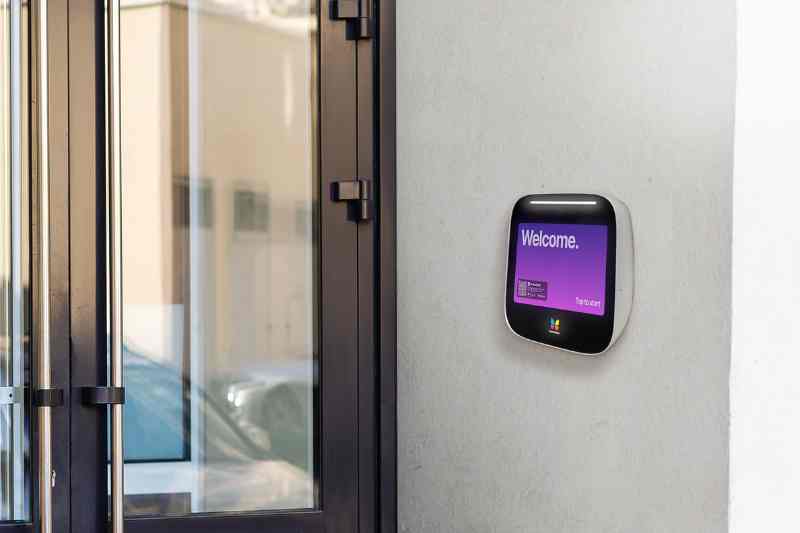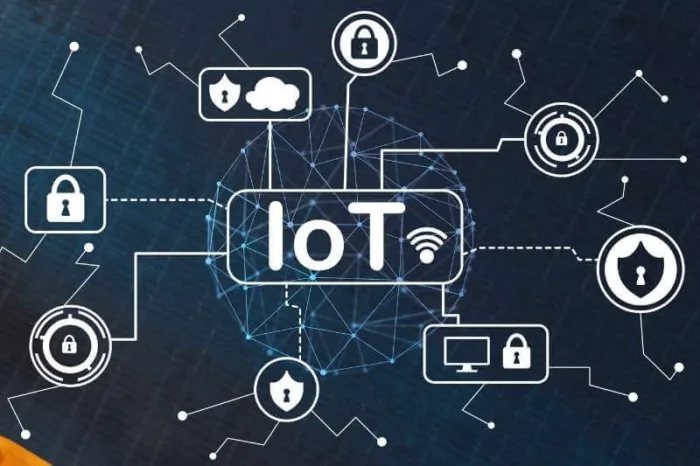
The Internet of Things (IoT) has allowed for the development of smart technologies across many industries, especially real estate. In fact, you’ve likely already experienced smart building IoT applications, whether you were aware of it or not.
By implementing IoT-connected devices in real estate, we can increase safety, efficiency, convenience, and so much more.
But what are some of the smart building IoT applications today? Fortunately, this blog covers three major applications of such technologies with real-world examples. Plus, you’ll learn about IoT and its relationship with smart buildings.
This post covers:
- What does smart building mean?
- What is IoT in smart buildings?
- 3 smart building IoT applications
- Examples of smart building IoT
What does smart building mean?
A smart building is a property that uses IoT technology to operate more efficiently in the form of automation, self-regulation, and optimization while maintaining a safe environment.
Smart buildings may use any number of IoT devices to handle tasks, such as regulating heating and cooling, automating work processes, collecting data, and more.
See what smart gadgets residents are looking for:
What are the basic components of a smart building?
There are four basic components a smart building must have to operate.
Those four components are:
- IoT sensors: The sensors are what monitor and collect data from various sources, like temperature, humidity, air quality, light, occupancy, etc.
- Analytics software: Software is necessary to read and interpret the sensors’ data.
- User interface (UI): The UI is how a user and the analytics software interact, meaning the user experience is one of the most important aspects of an intelligent building.
- Connectivity: Finally, the last component is connectivity, which is how everything communicates. The most common method is WiFi, but cellular networks are also used.
What is IoT in smart buildings?
IoT in smart buildings refers to the devices that communicate with each other so they can monitor, collect, analyze, and interpret data to improve operations.
Some common IoT devices include:
- Temperature and humidity controls
- Occupancy counters
- Water leak detectors
- Smart lighting systems
- Door open and close sensors
- HVAC and air quality controls
3 smart building IoT applications
IoT devices are used in smart buildings in numerous ways. With that said, there are three notable smart building IoT applications within the real estate market you should know about.
Applications of IoT in smart buildings include:
1. Home automation
Smart homes have boomed in popularity over the past decade because of the convenience and money they save people. Smart building IoT devices can regulate any number of systems within a house or apartment.
For example, sensors can monitor heating and cooling systems, thus lowering energy consumption. In another case, lighting can be set to motion-activated, so they’re only turned on when people are in the space.
Regardless of the implementation, these devices enhance the resident experience while reducing operating costs. More importantly, residents are more likely to renew their leases — and prospective residents are more likely to move in — if a building has smart technology.

2. Security
Smart building IoT devices are helping properties remain safer through remote capabilities and delivering real-time data. Traditional security feeds require an on-site security guard for monitoring. In contrast, IoT systems monitor security feeds remotely using WiFi or cellular connectivity.
Furthermore, AI can help reduce the need for monitoring by sending alerts based on certain activities it detects. These same security systems can help properties determine if there was a security breach before contacting the authorities. As a result, fewer hours are spent watching live video feeds so staff can spend more time handling more pressing tasks.
3. Facility management
Properties can have a vast range of facilities requiring regular monitoring and maintenance. At the most basic level, IoT-connected devices can automate lighting and HVAC systems.
In the case of an HVAC system, IoT devices can even adjust heating and cooling based on occupancy levels. That way, people remain comfortable and continue to breathe clean, healthy air.
At a more complex level, IoT incorporates predictive maintenance, giving technicians notice of future repairs or replacements before they’re needed. Asset tracking is another great application for smart building IoT because it reduces downtime by eliminating manual labor. Automatic asset tracking also helps mitigate potential theft or delays.
Overall, facility management benefits from the inclusion of smart building IoT by:
- Reducing downtime
- Creating safer environments
- Maintaining valuable assets
Examples of smart building IoT
While there are plenty of ways to apply IoT devices to smart buildings, it’s better to understand how they’re applied in real-world scenarios.
Some real-world examples of smart building IoT include:
Access control
IoT devices are changing the way we manage visitors and secure our properties. Rather than using traditional keys to access a building, cloud-based access control systems let tenants use their phones. This way, access to the property is simple, secure, and fast.
Access control may encompass several different IoT-connected devices, such as:
- A video intercom
- Keypads
- Card readers
- Smart locks
In a smart building IoT access control application, all these devices are connected to the internet and seamlessly integrate with one another.
As a result, users can easily enter the property and any spaces within using a single device. This kind of feature cuts down on the costs of traditional keys. Moreover, it greatly increases safety and security by eliminating the risk of lost or stolen keys.

Utilities and energy
While we’ve already mentioned serious energy savings, it’s crucial to mention what it’s capable of for all properties.
On a small scale, sensors can help monitor the climate conditions for multifamily properties, commercial buildings, and industrial facilities. These sensors help regulate humidity, temperature, lighting, and more. Depending on the system, they could be directly tethered to occupancy levels, allowing for optimal climate conditions at all times.
But IoT sensors can also be applied to city power grids at a larger scale, creating ‘smart cities.’ Municipals can then gather data on energy usage all over the area. Simultaneously, those sensors can be used to identify and locate power outages faster.
Maintenance
Using IoT devices in maintenance is boundless, but they all have the same goal in mind: to catch and fix small issues before larger problems arise.
Many IoT sensors are used in maintenance to notify technicians of upcoming repairs or problems. In turn, technicians can proactively maintain devices or systems before problems arise. So, these sensors significantly reduce downtime and increase the system’s longevity.
On the other hand, IoT-connected devices can prescribe condition-based maintenance (CBM) to assets. This means maintenance is only performed when certain indicators reveal a decrease in performance. So, rather than routine maintenance, CBM helps further reduce downtime and catches potential problems based on the data collected.
Manufacturing
Industrial and manufacturing facilities take advantage of technologies like RFID and GPS. From the assembly line to the store shelves, these technologies help track products throughout every stage of the manufacturing process.
What’s more, data is collected at each stage of the process, allowing companies to improve manufacturing further. They can monitor a wide variety of traits, including product condition and delivery times. Not to mention, the same sensors are used within the facility to identify areas in which the assembly line is operating less efficiently.
All of this data is used to increase automation, improve efficiency, and maintain a safe environment.
Takeaways
- A smart building is a property that uses devices that connect to the internet and speak with one another to share data.
- For a building to be considered smart, it must have four components: IoT sensors, analytics software, user interface, and connectivity.
- IoT in smart buildings refers to the devices that connect to the internet and talk to each other.
- Three smart building IoT applications include home automation, security, and facility management.
- Real-world examples of smart building IoT applications are access control systems, utility and energy management, maintenance, and manufacturing needs.






